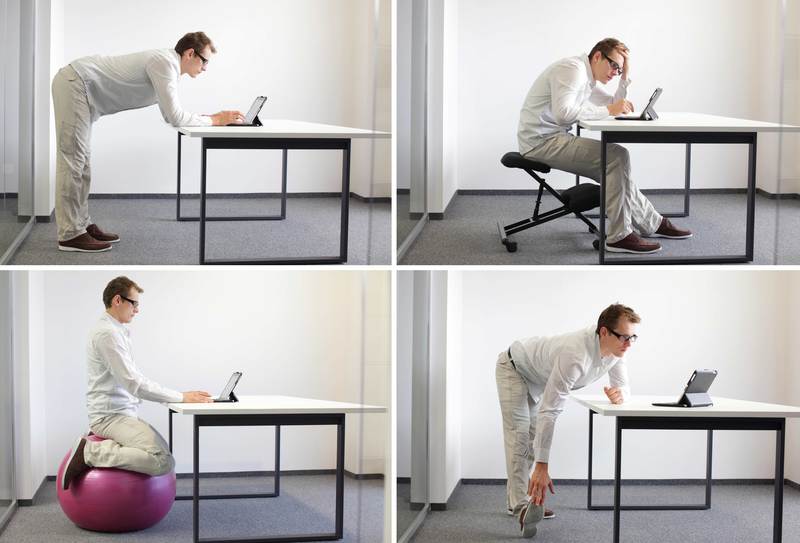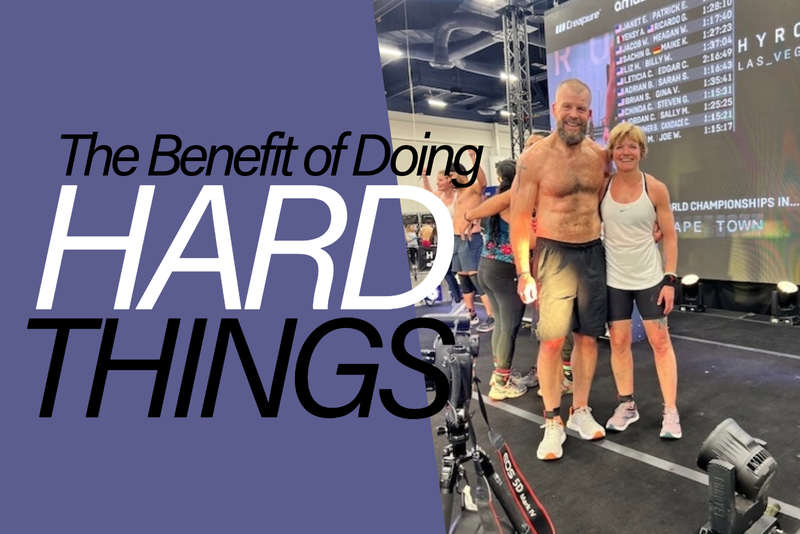News
A New Approach to Ergonomics

You might want to take a seat for this—new studies from Cochrane, an international research network dedicated to studying health care data, show that those who work at a desk don’t need the perfect work station for proper ergonomics.
Sitting is not necessarily the new smoking and standing at your desk all day could, in fact, be putting a strain on your joints. Buying an expensive ergonomically-correct keyboard will not solve carpal tunnel syndrome, and taking a work call while you type isn’t going to cause a neck injury. The conversation around ergonomics is shifting, and if there’s one steadfast rule that remains critical to the musculoskeletal (and mental) health of every office worker, it’s to keep moving.
Ergonomics has been a hot topic in the workplace since the 1990s. The Occupational Safety and Health Administration (OSHA) defines ergonomics as “the process of designing a job to fit the employee, rather than forcing the employee’s body to fit the job.” Today, ergonomics continues to play an important role in the process of individualizing the workplace to reduce physical stress on the body and eliminate potentially harmful work-related musculoskeletal disorders. However, while ergonomics is a science, there isn’t a compelling amount of evidence to prove that some of the standard ergonomic interventions actually work. And in some cases, it’s suggested some of the recommended adjustments have been misleading and even detrimental.
Companies around the world have invested hundreds of millions of dollars on ergonomists (professionals in ergonomics), chairs, split keyboards, mousepads and stand-up desks. And yet, the U.S. Department of Labor cited, “Of the reported 1.5 million workplace related injuries per year, about half are directly attributed to ergonomic related injuries.” And, the National Safety Council stated, “The costs of ergonomic related injuries and their related impacts to U.S. businesses are estimated to exceed $120 billion each year.” Treatments for ergonomic related injuries may include anti-inflammatory drugs, physical therapy and sometimes surgery.
Mike Granzin is a physical therapist with Howard Head Sports Medicine’s SafeFit® employee wellness program. He said about 25% of his SafeFit patients work desk jobs and about 50% complain of back and neck pain. Still, he argues, “The ‘perfect’ ergonomic equipment doesn’t exist because we, as humans, are not built to sit or stand in the same position for eight hours or more a day. Even an individualized ergonomic set-up is just reducing the stress of a sedentary job because our bodies are designed for movement.”
So if the latest interventions and fancy toys don’t work, how do people who work at a desk all day mitigate the risk for repetitive strain injuries? OSHA recommends taking frequent breaks, stating, “Workers should think of themselves as industrial athletes; athletes wouldn’t participate in a sport without proper rest and warm-up, so use the same preparation on the job.”
TAKING BREAKS
The OSHA safety manual said, “During a job task, take micro-breaks lasting 10-15 seconds every ten minutes. Take mini-breaks lasting 3-5 minutes every 30-60 minutes. These short breaks give the body a rest, reduce discomfort, and improve your performance.”
Using break times to do some gentle stretching increases flexibility and encourages blood flow and oxygen to the muscles. Taking a walk to the water cooler encourages hydration. Breaks spent socializing with others benefit everyone’s mental health.
“Consistency is an important factor in improving ergonomics,” explained Granzin. He urged, “Five minutes of stretching per day isn’t going to counteract eight hours of sitting at a desk. In the same manner, exercise for a week isn’t going to negate years of negative stresses and poor postures. It takes time, consistency and really finding out what works for each person.”
If you’re the type who gets in a groove and types for hours at a time, consider setting a timer to remind yourself to take breaks. And while it’s just as easy to hit ‘snooze’ as it is in the morning when all you want is a few more minutes in bed, avoid the temptation and give your body a rest. A few more minutes–spent answering one more email, tackling one more spreadsheet–can be detrimental when they add up to a day of sitting or standing in the same position. According to a 2019 Washington Post article, “The average American adult now spends about 6½ hours a day sitting — an increase of about an hour a day since 2007. For teenagers ages 12 to 19, that number is eight hours a day.”
MOVE YOUR BODY
Brett Mueller is also a physical therapist with Howard Head Sports Medicine. He warned, “We know that sedentary behavior is correlated with an increased risk for obesity, diabetes, high blood pressure, heart disease and other chronic illnesses. Inactivity can negatively affect blood circulation and the immune system, and people who don’t move their bodies suffer from poor sleep quality, which in turn affects their mood. From a musculoskeletal perspective, people who spend prolonged periods of time in a stationary position are at an increased risk of gaining weight because they burn fewer calories and their muscles and bones can weaken.”
A study authored by scientists from Columbia University goes as far to connect a sedentary lifestyle to death. Referring to it as the “sitting disease,” the study showed that those who moved the least – sitting more than 13 hours per day for an hour to 1.5 hours at a time – had a nearly two-fold increase in death. That included people who exercised regularly.
“We can’t emphasize the power of movement enough,” said Mueller. He suggested, “Stress a little less about posture and the perfect workstation set-up, and focus on moving more instead. We don’t want people to think they can slouch sideways on the couch with their laptop on the coffee table for hours on end. But, there’s a lot of room for an acceptable workspace as long as you get up and move throughout the workday. Do that and you’ll probably feel better physically and emotionally.”
Proper ergonomics contribute to a healthy workplace and longevity. But the key is not setting up the perfect workstation; rather, to step away from it every 30 minutes and move your body.
COMFORT EXERCISES
Granzin and Mueller recommend the following gentle exercises to prevent muscle tension and stiffness throughout the workday.
- Warm up: Reach your arms to the sky while drawing deep breaths into your lungs. Inhale and exhale, letting your stomach expand and contract while you relax your shoulders, neck and back. Repeat.
- Neck stretches: Gently glide your chin towards your chest, keeping your head and ears level. Then slowly tilt your head up and peer towards the ceiling. Repeat.
- For the upper back: Raise your hands to your shoulders. Using your upper back muscles, push your shoulders back. Keep your elbows down. Hold for 15 seconds. Repeat.
- For the lower back: Standing with your weight evenly distributed between both feet, drop your chin to your chest and slowly lower your upper body one vertebra at a time until your arms are dangling towards the ground. Take a deep breath and slowly rise one vertebra at a time. Repeat.
- For the shoulders: Raise your arms to the sides, elbows straight, and slowly rotate your arms in small circles forward, then backward. Lower your arms, then repeat.
- For the hands and wrists: Hold your right arm out, fingers pointed up. Take your left hand and gently bend your right hand back toward the forearm. Hold 5 seconds. Repeat on the other side.
- For the fingers: Hold your hands out in front of you, palms down. Spread your fingers apart as far as you can. Hold for 5 seconds, then make a tight fist. Repeat.
More News
-
More

The Benefit of Doing Hard Things
How Creating Resiliency Impacts Long-Term Health I had just returned from my first Hyrox, a fitness race...
-
More

Spring Is in the Air, And So Are Allergens—How to Combat Spring Allergies
For some of us, April marks the end of the ski season. For allergy specialists like me, it means the beginning of a...
-
More

The 3 Cs of Measles
Recent news reports on measles outbreaks have brought the once-dormant disease to the forefront of many...





